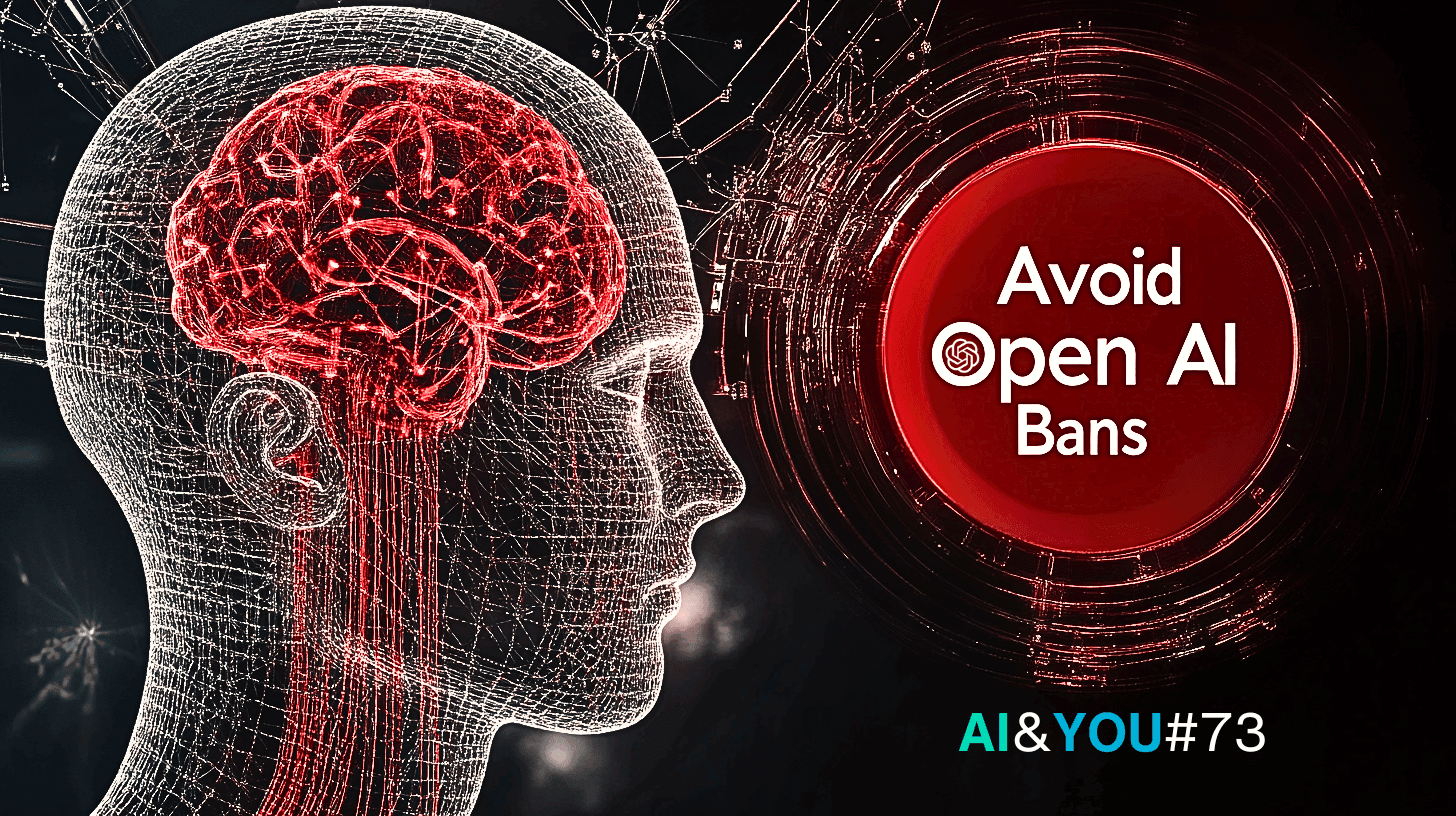AI&YOU #23: 10 Reasons Why Your Enterprise AI Project Will Fail
This week, we’re delving into the world of Enterprise AI, highlighting its transformative role in business strategies and operations.
We explore the common pitfalls in AI projects, providing insights and proactive measures to ensure success and realize AI’s potential. We also examine the frequent mistakes made during the initiation of Enterprise AI projects, offering guidance to navigate the journey effectively. Additionally, we discuss the advantages of investing in Enterprise AI solutions over traditional software, focusing on scalability, integration, and impact in optimizing business processes.
For those interested in unlocking the innovative prowess of Enterprise AI, we’re here to guide you. Schedule an intro call with us.
- AI & YOU #23: 10 Reasons Why Your Enterprise AI Project Could Fail
- 1. Poor Data Management
- 2. Lack of AI Capabilities and Awareness Among Employees
- 3. Unclear Business Objectives
- 4. Underestimating Time and Cost
- 5. Lack of Leadership
- 5. Lack of Leadership
- 7. Inadequate Technology Infrastructure
- 8. Unrealistic Expectations
- 9. Lack of Skilled Data Scientists
- 10. Ethical and Legal Concerns
- Mistakes Enterprises Make When Starting an Enterprise AI Project
- Investing in Enterprise AI Solutions Over Traditional Software Purchasing
- The Limitations of Traditional Software Purchasing
- The Strategic Advantage of Enterprise AI
- Implementation and Seamless Integration
- Implementation and Seamless Integration
- The Dynamic Scalability of Enterprise AI Solutions
- The Sustained Investment in Enterprise AI Solutions
- The Sustained Investment in Enterprise AI Solutions
AI & YOU #23: 10 Reasons Why Your Enterprise AI Project Could Fail
In today’s technologically advanced era, enterprise AI and machine learning is reshaping the way businesses operate, promising unprecedented efficiencies and innovative solutions. However, the path to integrating artificial intelligence and machine learning into business processes is laden with obstacles.
A myriad of AI projects stumble and fall, unable to meet their objectives. Understanding these pitfalls is pivotal for enterprises aiming to harness the transformative powers of AI models and machine learning models in enterprise software.
Let’s take a look at the top 10 reasons why enterprise AI projects fail.
1. Poor Data Management
Inadequate data management can severely compromise the effectiveness of enterprise AI applications, leading to the development of inaccurate and unreliable machine learning models. This inadequacy can jeopardize the integrity of machine learning and AI projects, resulting in misguided insights and flawed decision-making, which can have far-reaching implications on an enterprise’s strategic directions and operational efficiencies.
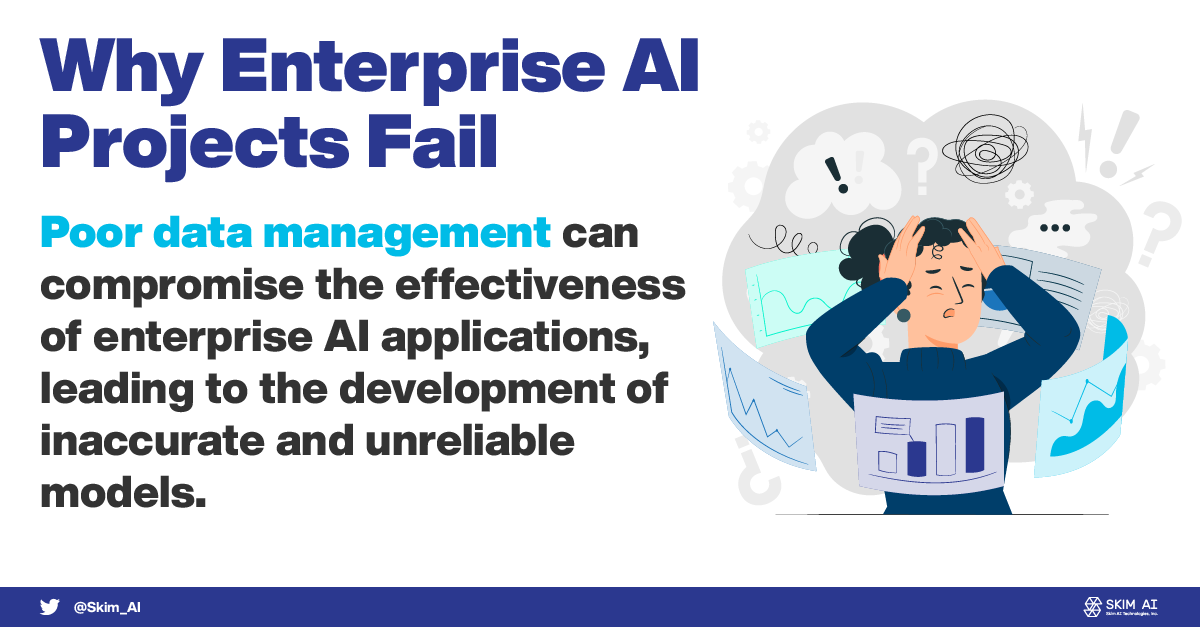
2. Lack of AI Capabilities and Awareness Among Employees
A deficit in AI capabilities and awareness among employees can be a significant roadblock in the progression of AI projects. It can lead to the misapplication and underutilization of enterprise AI solutions, stifling innovation and preventing enterprises from unlocking the full potential of AI in optimizing business processes.
3. Unclear Business Objectives
Ambiguous and unclear objectives can derail AI projects, causing a disconnect between AI model applications and business goals. This misalignment can lead to project failures, resource wastage, and missed opportunities, impacting the overall productivity and profitability of enterprises.
4. Underestimating Time and Cost
Underestimating the time and cost associated with AI projects can lead to rushed implementations, compromised quality, and eventual project failures. It can strain the resources of the enterprise and lead to disillusionment with artificial intelligence and its potential benefits, hindering the adoption of enterprise AI in the long run.
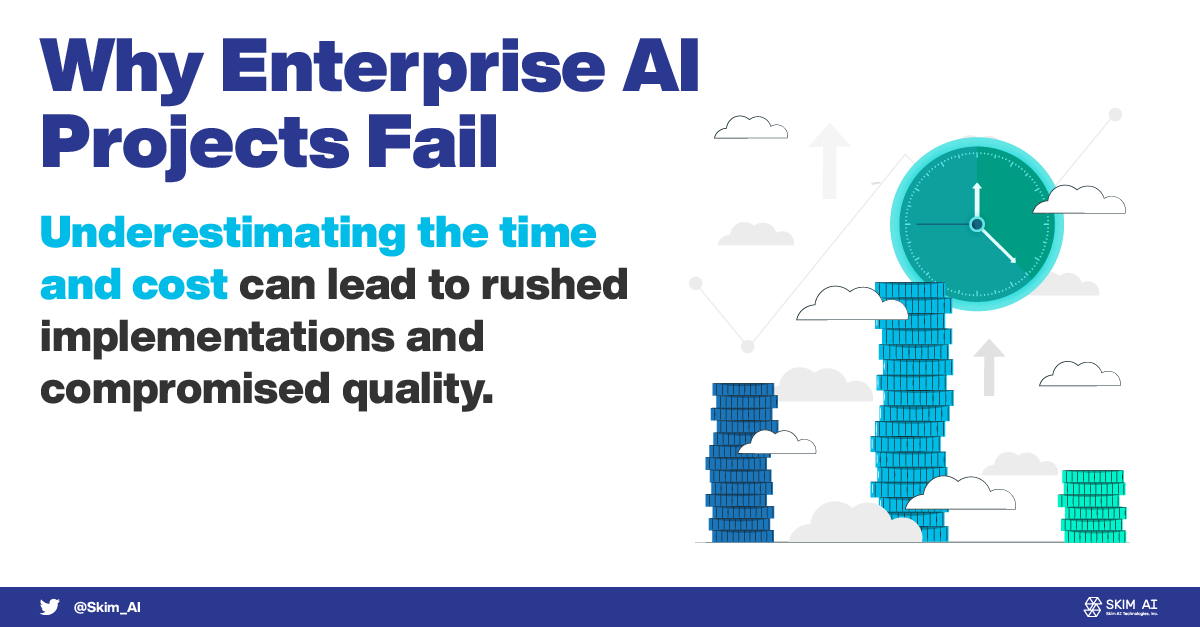
5. Lack of Leadership
A lack of leadership can result in a lack of direction, focus, and coordination in AI projects, leading to inefficiencies, misalignments, and eventual project failures. It can create a vacuum where ambiguities thrive, and the lack of clear guidance can derail the project and waste valuable resources.
5. Lack of Leadership
A lack of leadership can result in a lack of direction, focus, and coordination in AI projects, leading to inefficiencies, misalignments, and eventual project failures. It can create a vacuum where ambiguities thrive, and the lack of clear guidance can derail the project and waste valuable resources.
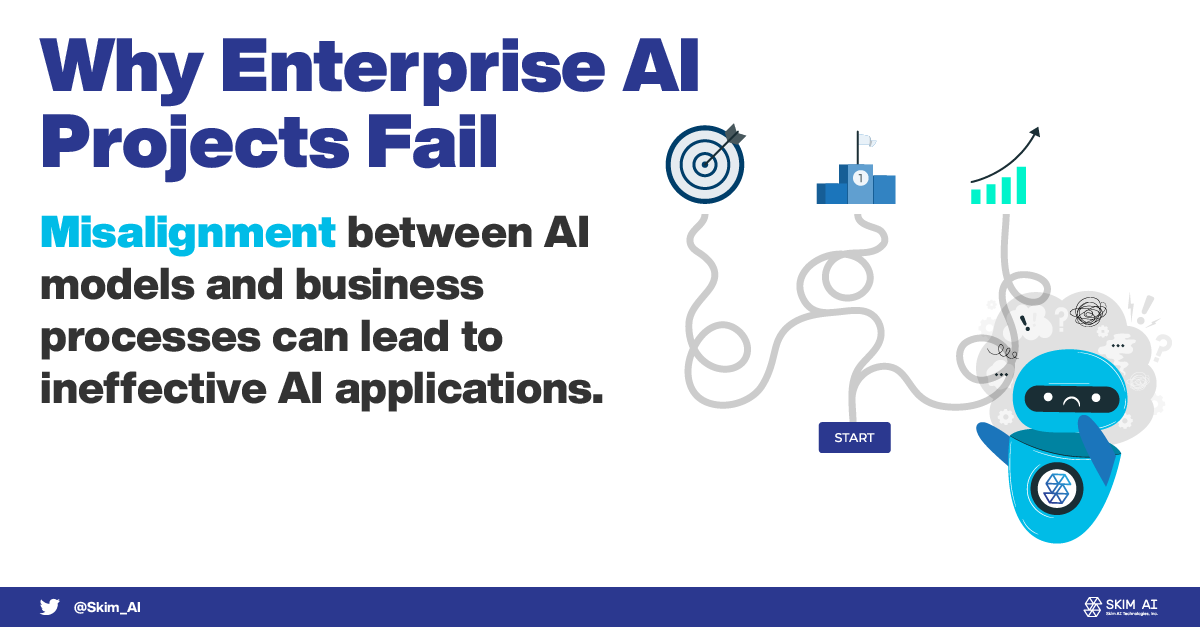
7. Inadequate Technology Infrastructure
Inadequate technology infrastructure can lead to performance issues, scalability challenges, and limitations in implementing advanced machine learning and AI models. It can compromise the effectiveness of enterprise AI applications and lead to project failures.
8. Unrealistic Expectations
Overestimating the capabilities of enterprise AI can lead to project overruns, unmet objectives, and disillusionment with enterprise AI solutions. It can hinder the progress of AI projects and can impact the overall confidence in the deployment of enterprise AI in business operations.
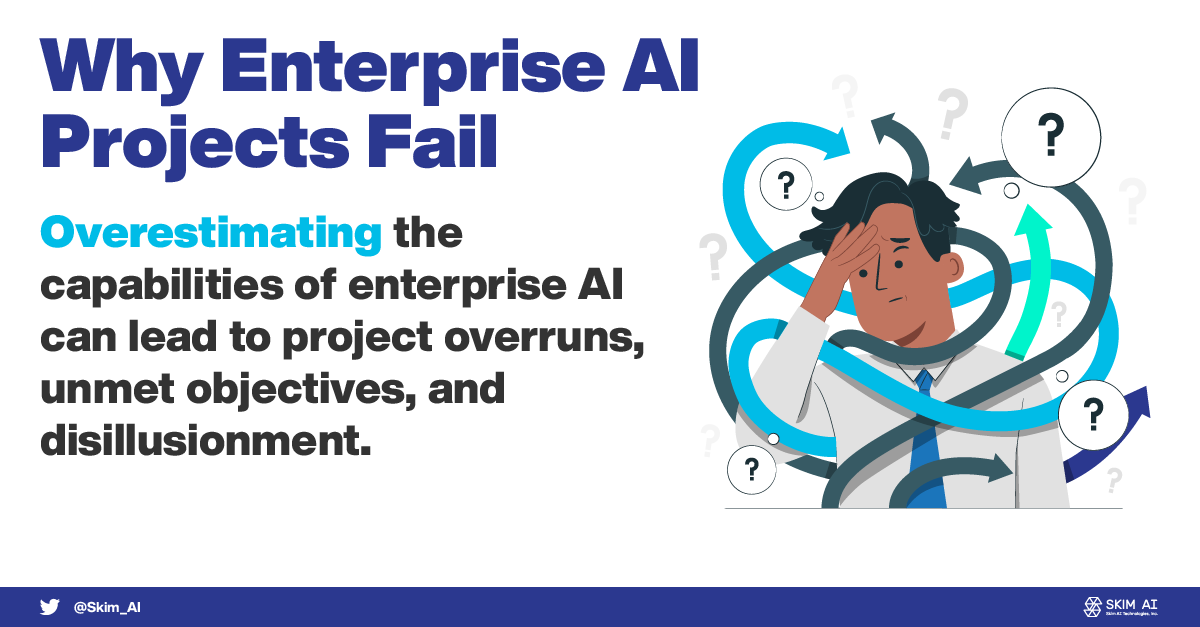
9. Lack of Skilled Data Scientists
The absence of skilled data scientists can lead to suboptimal development and implementation of enterprise AI applications, affecting the quality and reliability of AI models. It can hinder the advancement of enterprise AI and can result in failed AI projects and unrealized potential.
10. Ethical and Legal Concerns
Unaddressed ethical and legal concerns can lead to complications and can jeopardize AI projects. They can hinder the acceptance and integration of enterprise AI applications, leading to reputational damage and loss of stakeholder trust in enterprise AI.
Read our full blog on “10 Reasons Why Enterprise AI Projects Fail.”
Mistakes Enterprises Make When Starting an Enterprise AI Project
The integration of enterprise AI into the business landscape is a transformative endeavor, promising unprecedented innovations and operational efficiencies. However, the journey is intricate and laden with potential pitfalls. That’s why this week, we also looked at the common initial mistakes enterprises often make when embarking on AI projects.
Avoiding these early mistakes is pivotal for laying a solid foundation for AI projects and ensuring the successful implementation of enterprise AI solutions.
1. Ignoring Data Quality: Ignoring the quality of data can lead to the development of flawed AI models, compromising the integrity and reliability of enterprise AI solutions. Poor data quality can result in inaccurate insights and misguided decision-making, affecting the overall success of AI projects and the realization of enterprise AI’s transformative potential.
2: Overlooking Employee Training: Overlooking the need for employee training in artificial intelligence can hinder the progress of AI projects, leading to the underutilization and misapplication of enterprise AI applications. It can stifle innovation and prevent enterprises from unlocking the full potential of AI in optimizing business processes and driving operational efficiencies.
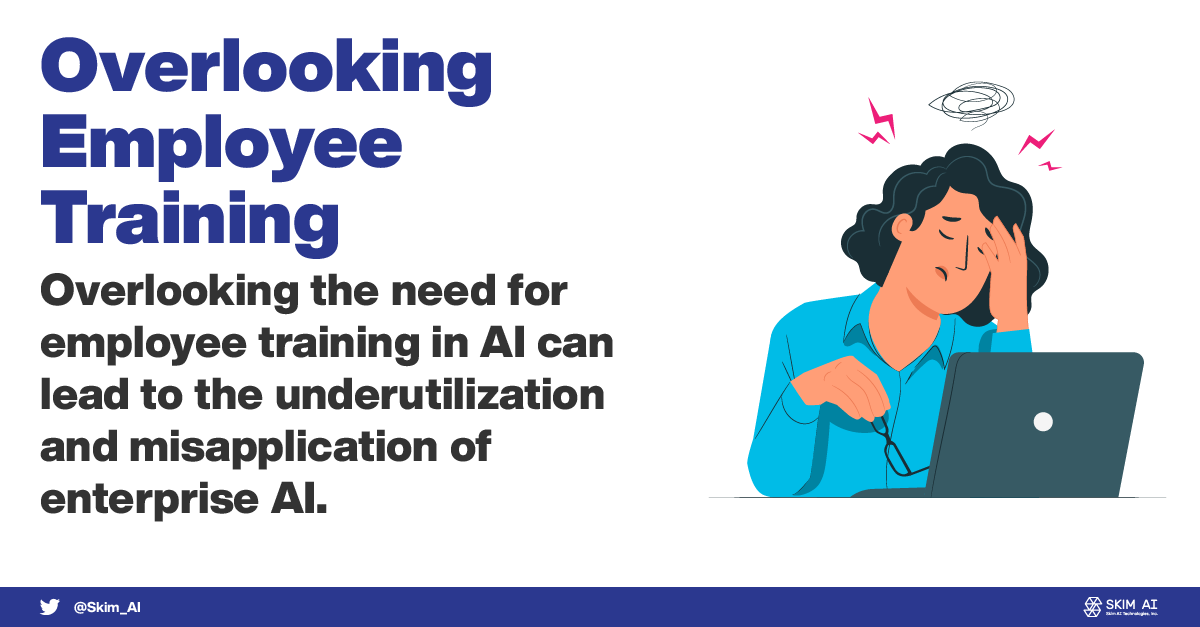
3: Underestimating Resource Requirements: Underestimating the resources required can lead to compromised quality and rushed implementations, affecting the success of AI applications. It can strain the enterprise’s resources and can lead to disillusionment with the potential benefits of artificial intelligence, impacting the long-term adoption of enterprise AI.
4: Setting Ambiguous Goals: Setting ambiguous goals can lead to a lack of focus and direction in AI projects, causing misalignments between AI capabilities and business goals. This misalignment can result in project failures, resource wastage, and missed opportunities for innovation and improvement in enterprise AI.
5: Lack of Strong Leadership: A lack of strong leadership can result in project failures, inefficiencies, and a lack of direction and focus in AI projects. It can create ambiguities and a vacuum where the lack of clear guidance can derail enterprise AI initiatives, wasting valuable resources and time.
6: Inadequate Integration with Existing Systems: Poor integration can lead to ineffective machine learning AI applications, reducing efficiencies and causing disruptions in business processes. It can result in wasted resources and can hinder the advancement and acceptance of enterprise AI in the organizational ecosystem.
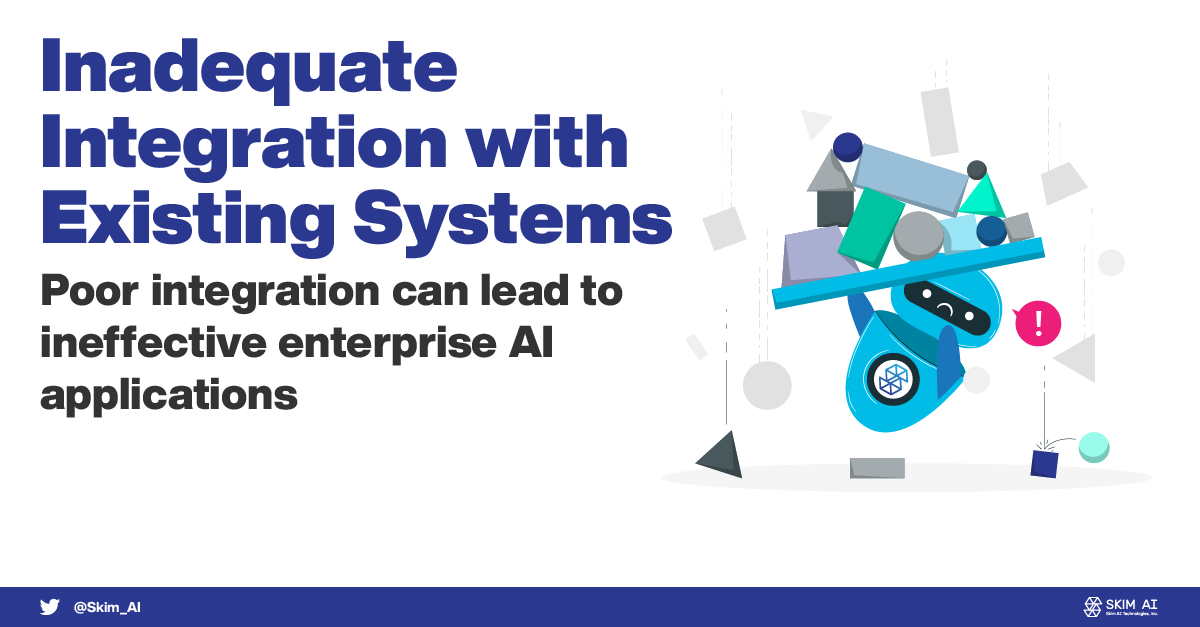
7: Neglecting Infrastructure Requirements: Inadequate technology infrastructure can lead to performance issues, scalability challenges, and limitations in implementing advanced AI models. It can compromise the effectiveness and reliability of enterprise AI applications, leading to project failures and a loss of investment in AI projects.
8: Having Unrealistic Expectations: Overestimating the capabilities of enterprise AI can lead to project overruns, unmet objectives, and disillusionment with enterprise AI solutions. It can hinder the progress of AI projects and can impact the overall confidence in the deployment of enterprise AI in business operations.
9: Overlooking the Need for Skilled Data Scientists: The absence of skilled data scientists can lead to suboptimal development and implementation of enterprise AI applications, affecting the quality and reliability of AI models. It can hinder the advancement and acceptance of enterprise AI, resulting in failed AI projects and unrealized potential.
10: Ignoring Ethical and Legal Implications: Unaddressed ethical and legal concerns can hinder the acceptance and integration of enterprise AI applications, leading to reputational damage and loss of stakeholder trust in enterprise AI. It is crucial to navigate ethical and legal waters responsibly to ensure the successful implementation of enterprise AI.
Read our full blog on “10 Mistakes Enterprises Make When Starting an Enterprise AI Project.”
Investing in Enterprise AI Solutions Over Traditional Software Purchasing
The last topic we cover this week is why the shift from traditional software purchasing to investing in enterprise AI solutions is a strategic imperative.
The conventional approach of acquiring software has served businesses for decades, providing essential tools to facilitate various business processes. However, the advent of enterprise AI marks a revolutionary transformation, offering unprecedented opportunities for innovation, efficiency, and strategic advancement. For modern enterprises aspiring to stay ahead of the curve, understanding this shift and embracing enterprise AI is pivotal.
The Limitations of Traditional Software Purchasing
Traditional software, whether acquired through one-time purchases or subscriptions, often comes with inherent limitations. It typically offers a static set of functionalities designed to address specific tasks or problems. While it serves its purpose, the scope for adaptability, learning, and evolution within the software is minimal.
The rigidity of conventional software can hinder the dynamic needs of contemporary businesses, restricting their ability to adapt and innovate rapidly in response to changing market demands and technological advancements.
The Strategic Advantage of Enterprise AI
Investing in enterprise software solutions, on the other hand, is a forward-thinking approach. Enterprise AI is not just a tool; it’s a strategic partner capable of learning, adapting, and evolving. It offers dynamic solutions, enabling businesses to harness the power of machine learning, data science, and artificial intelligence to transform their operations and business processes.
The strategic advantage of enterprise AI lies in its ability to provide insights, enhance decision-making, and drive innovation, positioning enterprises to navigate the complexities of the modern business environment proactively.
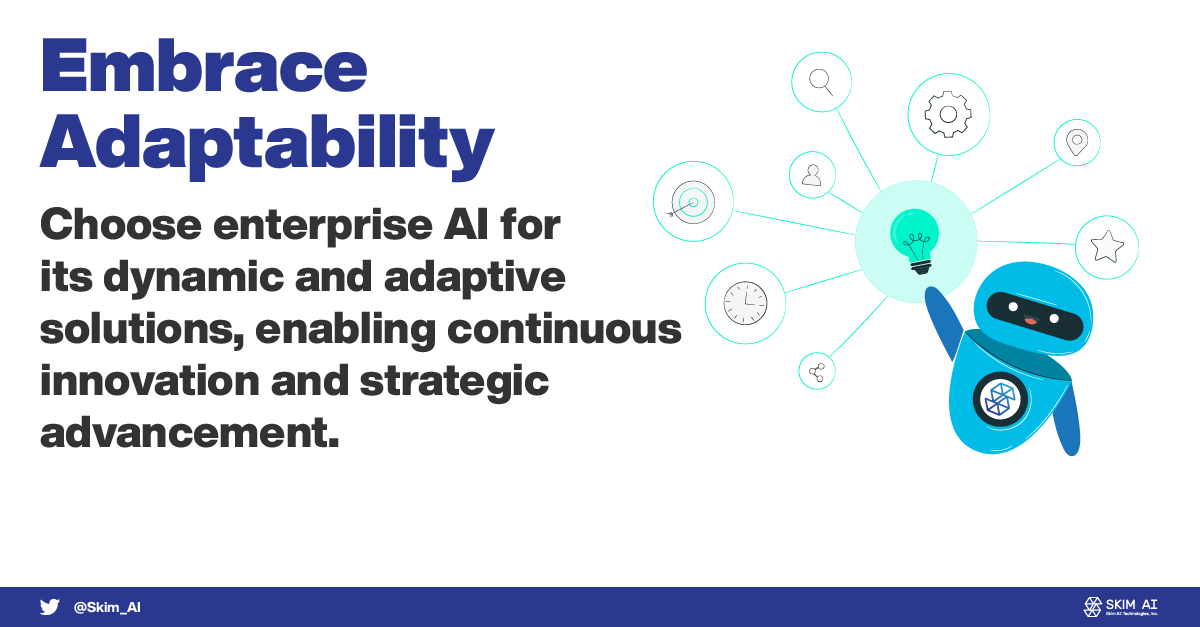
Implementation and Seamless Integration
Exploring the implementation process reveals the challenges of software integration and the seamless adaptability of enterprise AI applications, highlighting the operational benefits of AI in enterprise settings.
- Software Implementation: Implementing traditional software can pose challenges, especially when integrating with existing systems and workflows. The compatibility issues, integration complexities, and disruptions in workflow are common hurdles that businesses encounter.
Enterprise AI Solutions: Conversely, enterprise AI solutions are designed with integration fluidity in mind. They are built to assimilate seamlessly into existing business processes, minimizing disruptions and maximizing adaptability.
Implementation and Seamless Integration
Exploring the implementation process reveals the challenges of software integration and the seamless adaptability of enterprise AI applications, highlighting the operational benefits of AI in enterprise settings.
- Software Implementation: Implementing traditional software can pose challenges, especially when integrating with existing systems and workflows. The compatibility issues, integration complexities, and disruptions in workflow are common hurdles that businesses encounter.
Enterprise AI Solutions: Conversely, enterprise AI solutions are designed with integration fluidity in mind. They are built to assimilate seamlessly into existing business processes, minimizing disruptions and maximizing adaptability.
The Dynamic Scalability of Enterprise AI Solutions
Enterprise AI solutions stand out with their inherent flexibility and scalability. They allow enterprises to tailor AI models and machine learning models to their specific needs, enabling continuous innovation and adaptation.The dynamic nature of enterprise AI empowers businesses to scale solutions in alignment with their growth and evolving requirements, fostering an environment of perpetual innovation and strategic advancement.





